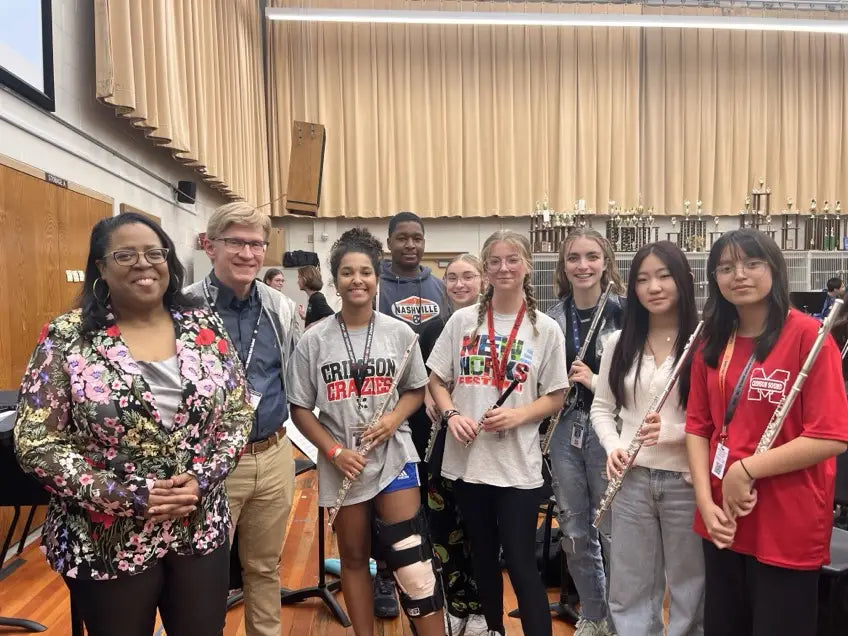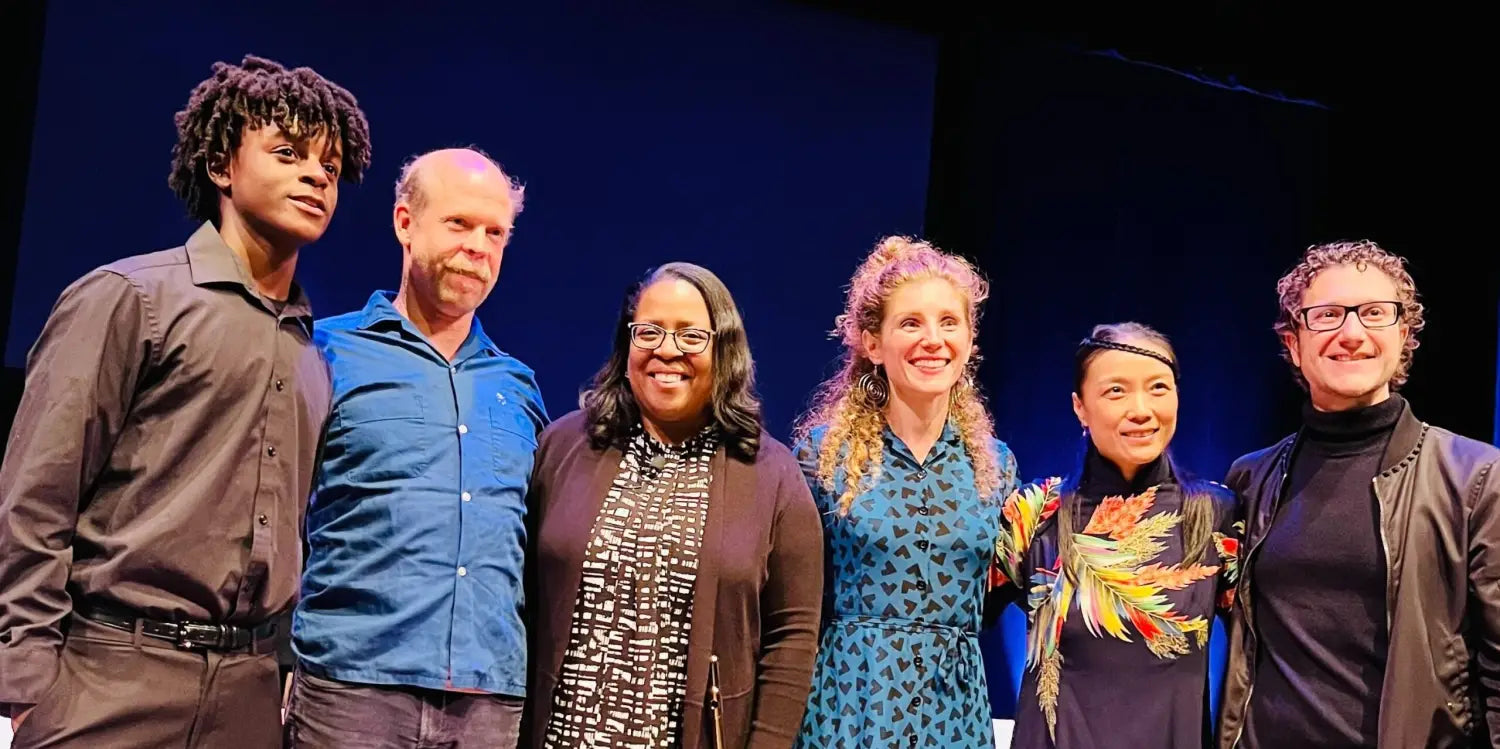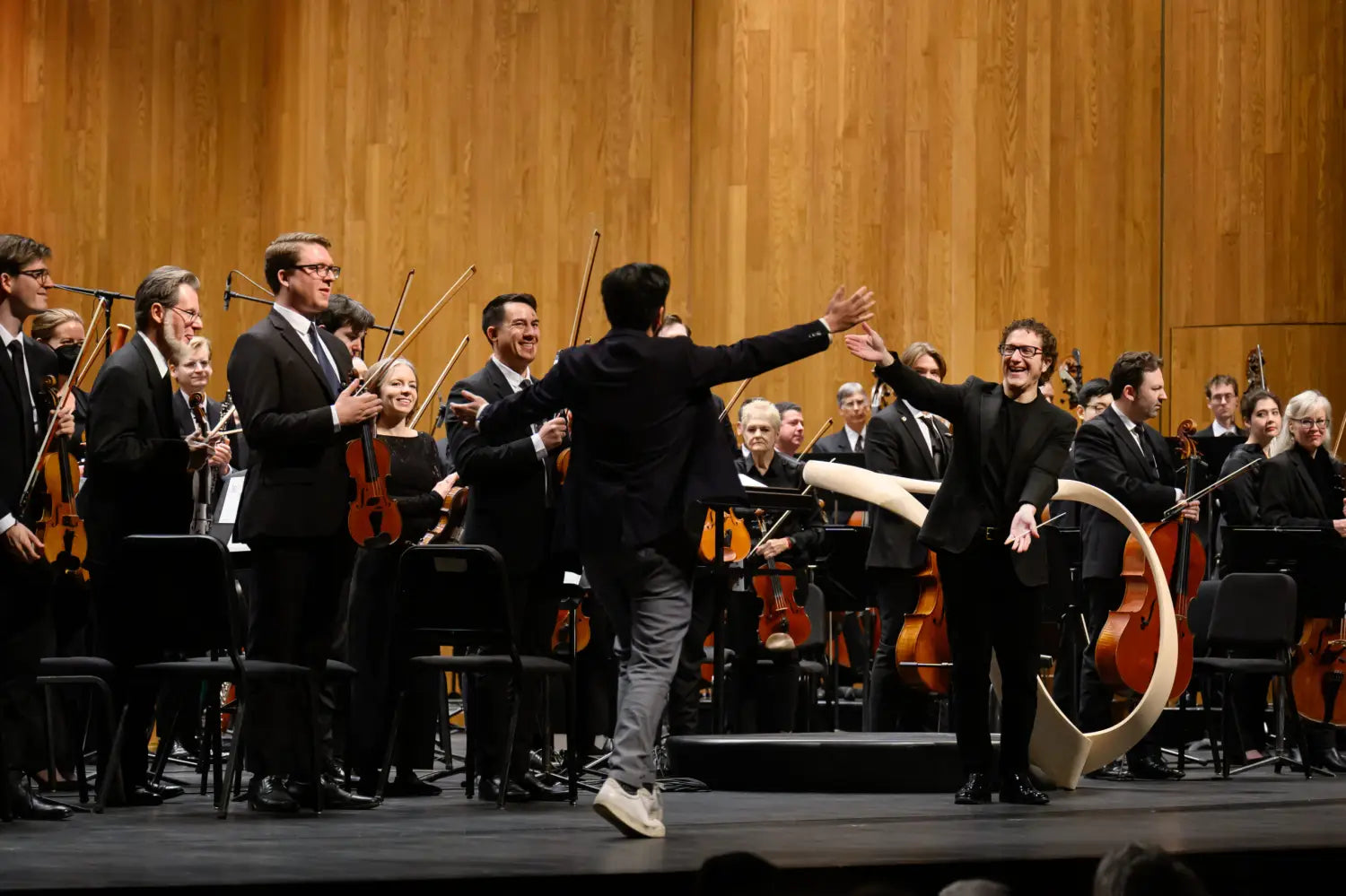Last month, I took a trip to Louisville, Kentucky to hear the Louisville Orchestra perform a new piece by Valerie Coleman, and to meet with some of the local creatives driving the city’s vibrant music scene. I was blown away by the orchestra’s impact and the energy of the local music community. Here are just a few factors that make Louisville such an inspiring case study for other music cities and institutions:
• The conductor of the Louisville Orchestra, Teddy Abrams, is fully embedded within the community and has reached across music genres, neighborhoods, generations, and traditions to anchor the orchestra at the heart of Louisville residents’ imaginations. The Louisville Orchestra presents itself as being from and of the people; the Uber drivers I spoke to referred to Teddy as a local hero.
• Community impact is also paramount to The Louisville Orchestra’s Creator Corps Program which enables composers to create new pieces for the orchestra while being part of the local community. Each year, three composers from across the US are invited to spend 12 months in Louisville, where they are given major slots in the main orchestral program and opportunities to speak with the audience before their pieces are performed. The morning concert I attended, which included music by members of this year’s Creator Corps, was more engaging and informal than the orchestral concerts I typically see; the audience expects to hear from the conductor and the artists – they are on a journey with a trusted curator.

Valerie Coleman at the Youth Performing Arts School. Photo credit: The Louisville Orchestra.
• The most established composer on the program was Valerie Coleman, who grew up in Louisville. Her Concerto for Orchestra was co-commissioned through New Music USA’s Amplifying Voices program with The Philadelphia Orchestra, Atlanta Symphony Orchestra, and New World Symphony. The meaning and power of Valerie’s connection to the city came across in the way she introduced her piece and the enthusiasm of the audience’s response to her shared history. During her stay, Valerie also gave a presentation at her former high school, coached a high school wind ensemble, and led masterclasses at the University.
• Future audiences in Louisville are being cultivated from a young age through the Louisville Orchestra’s In Harmony Tour, In 2022-24 this program reached over 27,000 Kentuckians across 38 counties with free performances at schools and community centers. The LO team made this happen by creating an external relations position and launching an advocacy campaign that helped convince the General Assembly to invest $4.3m in this critical, wide-reaching work.
• The orchestra’s programming regularly features artists from non-classical genres to reflect the music traditions of Kentucky and the eclectic sound of Louisville’s local artists. The musicians and venue owners I met were grateful for Abrams’ endorsement of the city’s independent music scene as artist and conductor.

From left to right: Tahj Vaughn, Will Oldham, Valerie Coleman, Sara Callaway, Wu Fei, Teddy Abrams.
• Louisville’s music scene is fueled by collaboration rather than competition. The city’s annual Festival of Faiths, which took place during my visit, presented a panel discussion with musicians who reflect the genre-agnostic attitude of Louisvillians. When I asked the panelists what made Louisville such a special city for music, singer-songwriter Will Oldham – AKA Bonnie Prince Billy – discussed the positive impact of “top-down” endorsement – from government, local philanthropists, and arts champions who believe in the placemaking power of music. Abrams emphasized the resourcefulness of local artists and innovators. Music entrepreneurs have a pragmatic, can-do attitude, providing spaces like La La Land Studios and The Monarch where the music community can come together, record, and perform.
Many of the points above draw from Louisville’s extraordinary history as an unexpected mecca for new music. In 1953, local donors and music leaders decided that the only way to save the orchestra from financial ruin was to reinvent it as a world-renowned commissioner of new work. LO commissioned 46 composers in that year alone thanks to support from the Rockefeller Foundation. Since 1985, the University of Louisville has also been responsible for the $100,000 Grawemeyer Award for Music Composition, which was in the news earlier this month. This international statement about investing in artists hails from Kentucky’s capital city.
I returned to New York feeling convinced that Louisville will be a city to watch and learn from in the coming years. In the words of The Monarch Music and Arts Community, “A city’s musical identity can transform a community.”

Creator Corps composer, Baldwin Giang and Louisville Orchestra conductor, Teddy Abrams. Photo credit: O’Neil Arnold.
For more on Louisville’s music story, please see:
Music Makes a City Documentary https://www.owsleybrownpresents.com/mmac-now
NewMusicBox: Different Cities, Different Voices (Louisville):
https://newmusicusa.org/nmbx/different-cities-different-voices-louisville/
The post How Music Can Make a City: The Louisville Example first appeared on New Music USA.
The post How Music Can Make a City: The Louisville Example appeared first on New Music USA.

